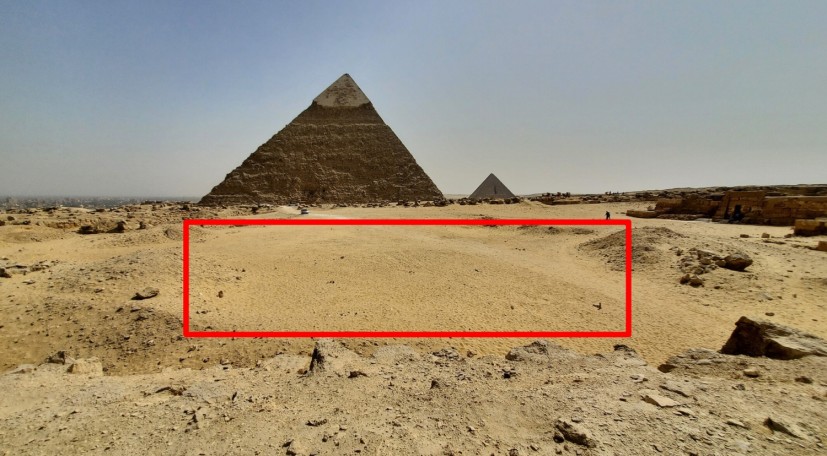A group of archaeologists from Egypt and Japan has unearthed a mystifying L-shaped structure obscured by a cemetery adjacent to Giza's Great Pyramid of Khufu, both of which are approximately 4,500 years old.
The researchers, which consist of members from Egypt's National Research Institute of Astronomy and Geophysics (NRIAG) and Japan's Higashi Nippon International University and Tohoku University, found the atypical area using ground-penetrating technology.

About the Mysterious Structure in Giza
Through scanning the surface of Giza's Western Cemetery, the archaeologists chanced upon the L-shaped anomaly. It was situated in the burial ground reserved for King Khufu's royal kin and other high-ranking officials, all of whom were laid to rest in mastabas (funerary tombs).
The newly uncovered structure was found to be surrounded by these tombs, the build of which was contrastingly typical. It is also of note that there have been no noteworthy excavations that took place in this mysterious section of the cemetery.
On the other hand, other areas have long been archaeological points of interest, which include mastabas that were dated back between the 4th and 6th dynasties. There, treasures like the seated statue of dwarf Perniankh, which was made from basalt, are among the recent findings.
In a report published to Archaeological Prospection last Sunday, May 5, the team said that "the structure causing the anomalies could be vertical walls of limestone or shafts leading to a tomb structure. However, a more detailed survey would be required in order to confirm this possibility."
However, what they can confirm is the structure's approximate size, which is said to be around 10 meters by 15 meters, buried 0.5 to 2 meters into the ground and filled with what the researchers called "homogenous sand" that suggests it was filled in shortly after being built.
Alongside this anomaly, another one was found deeper in the site, indicating the possibility of it being a tomb entrance that leads into another chamber.
Of this discovery, the researchers concluded: "We believe that the continuity of the shallow structure and the deep large structure is important."
That said, the team also expressed that to ascertain the true value of the discovery, a more comprehensive excavation is recommended to roll out immediately.